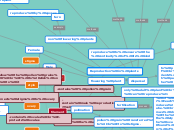Pollinators visit flower because
it either attracted to the flower
petals or for food(nectar)
systems
only adult plant
can reproduce!
adult plant
young plant
seed
flowering plant
dispersal
splitting/explosive action
Rubber fruits
saga pod
Some fruits split open when they are ripe to
shoot their seeds out in different directions.
Other fruits split open to release their seeds
only after the fruits have dried up.
animal dispersal
berry fruits
grasses bristles
Seeds found in fleshy fruits are dispersed when animals eat the fruits and throw away the seeds.Some animal eat both the fruit and the seed and pass the seeds out in their droppings.Some seeds have sticky hairs.They get dispersed by sticking to the fur of animals or humans.
wind dispersal
dandelion
shorea
Fruits or seeds dispersed by wind are usually light and small.They are easily carried by the wind.Some fruits and seeds have wing like structure that help them say longer in the air.This allow the fruits and seeds to be carried over greater distances.
water dispersal
nipah
coconut
Plants that grow in or near water disperse their fruits or seeds by releasing them into the water.These fruits usually have fibrous husks which trap air,or waterproof coverings.These help the fruits to stay afloat in water.The fruits are then carried along streams and rivers,or out to sea to distant location.
to prevent competition of
space,water,nutrients,sunlight
with parent plants or other plant
plant are likely to have a
thicker stem when they
do not grow in a overcrowed
place.
overcrowding can cause plants
to grow tall and thin.
fertilisation
1.When pollen grains land
on the surface of the stigma,
each pollen grain produces a
pollen tube.
2.This tube grows down from
the stigma,through the style to
the ovary.The ovule is found in
the ovary of the flower.Inside
each ovule is an egg cell.
3.When the pollen tube reaches
the ovule,the male reproductive
cell in the pollen tube fuses with
the egg cell.(Fusion of the male
reproductive cell with the egg cell
is called fertilisation)
The flower petals
The ovary starts to swell
to form a fruit.The ovules
start to develop into seeds.
Seeds continued to
develop inside the fruit
and the fruit grows bigger.
Flower petals wither
Ovary starts to swell to form fruit.
The ovules starts to develop into
a seed.
The seed continues to develop
inside the fruit and the fruit
grows bigger.
Female
ovule
-contain egg cells
ovary
-contains ovules
-protects ovules
style
-connects stigma to ovary
stigma
-allow the pollen grains
to stick on to it
pollination
pollen grain transferred to
to stigma.
cross-pollination
self-pollination
by pollinators
-large
-brightly coloured
-scented to attract insects
-anthers do not hang out of the flowers
-stigma is sticky to catch pollen grains
-has sweet nectar
-stamens and stigma are hidden inside flowers.
-Pollen grains are larger and heavier with a rough surface for sticking to an insect’s body.
-A smaller number of pollen grains is produced.
balsam
wild orchid
rose
buttercup
bees
by wind
-usually small and dull coloured and no scent
-anthers hang out of flowers so that pollen grain are easily shaken free and carried by wind
-stigma is large and feathery in order to catch pollen grains floating in the air.it is not sticky
-Pollen grains are smaller, smoother, lighter and easily blown by the wind. A larger number of pollen grains is produced.
oak
pine
maize
grass
Male
filament
-supports the anther
anther
-contains pollen grain
-contain male reproductive cells.
pink--function
Petal does not belong to either female or male.
orange--female parts of flower
red--male parts of flower
Reproduction in plants
reproduce to ensure the continuity of its kind
germination
condition needed to germinate
air(oxygen)
water
warmth(a suitable temperature)
The root of the baby plant grows first.During this stage,the baby plant is not unable to make its own food.It gets its nutrients from the food stored in its seed leaves
The shoot grows next
The young plant start making its own food when it develops leaves.
non flowering plants
fern
reproduce by spores
found in the spores bag under the leaf of nonflowering plant
plants
plant cell
cell wall
found outside the cell membrane.it supports and give the plant cell its shape
cyctoplasm
a jelly substance where cell activities takes place.
cell membrane
a thin membrane that surrounds the cytoplasm.It controls the movement of substances in and out of the cell.
nucleus
controls all activities in a cell found in the cytoplasm, it contains information that is passed down from parents to young.
chloroplast
structures that contain chlorophyll,
the green pigment that traps sunlight
to make food for the plant.
fruits(adult flowering plant only)
protect the seed/s
flower(adult flowering plant only)
to produce the fruit that contains seeds
stem
transport food and water all around the plant
food carrying tubes
outer layer
water carrying tubes
inner layer
support the plant upright
leaves
make food for the plant
roots
hold the plant firmly to the ground
absorb water and nutrients from the ground









